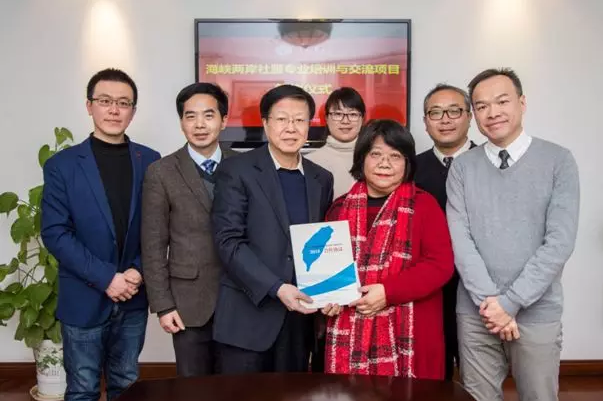From 2017 to 2018, I was sent by the China Christian Council & Three-Self Patriotic Movement to do advanced studies at the Taiwan Baptist Christian Seminary. In my free time, I had the pleasure of visiting local churches. I came across an effective outreach ministry called "The Happiness Group". This is my summary of their evangelism strategies to inspirate the ministry of the gospel on the mainland.
The origin of the "Happiness Group"
Kaohsiung's FuQi (Blessed & Blessing) Church in Taiwan was started by some families who had the same vision of building community churches. Rev Young Sih-ju, the church's senior pastor said, "Jesus Christ became incarnate, came into the world, and made his dwelling among us. Our church should be incarnate and dwell among the communities." In order to get closer to the surrounding residents, the church was called, " Blessed & Blessing Church" in order to avoid sounding too "religious".
The goal of the church is to be open to the community, so that residents of the community are willing to walk into the church. The church wants to create an environment where people in the community come naturally. So the church has always had this goal: to preach the truth in a way that the world can understand.
In 2008, the two-winged systematic pastoral care strategy was introduced into Taiwan from South Korea. At the time, Rev. Young invited the Korean pastor who invented the strategy to share about it in Taiwan. However, the system turned out not to be compatible with the local church. Rev. Young spent more than a year developing an evangelism approach and named it, the "Happiness Group".The method was first applied in the Blessed & Blessing Church and was found to be very effective. In the first decade since the founding of the church, the number of the congregation fluctuated at around 200. After the Happiness Group method was used for four and a half years, the church had baptized more than 1,600 people.
Owing to this rapid growth, the church held conferences on the feasibility of the approach in Kaohsiung, Taichung, and Taipei. More than 10,000 participants from 15 countries and areas attended the international workshop hosted in Kaohsiung in late July 2018, including some church representatives from North America and Europe.
Analysis of the "Happiness Group" strategy
According to my observations, I attribute three reasons to the success of the Happiness Group strategy.
First, evangelism is the continual mission of the church. The Happiness Group approach offers a discipleship opportunity for every believer to preach the gospel. It is not for the elite who have great eloquence, knowledge, and discipleship-making capability, but trains every church member to be a disciple. Second, the Happiness Group strategy is a teamwork strategy. In the group, each of the members is responsible for worship, prayer, preaching, testimony, or communication during the evangelism outreach and there is also time for review after the outreach is finished.
Through group strategy, evangelism becomes the church's key ministry. The evangelical strategy is about action, not knowledge. If a church has mature cell groups, a Happiness Group will be made up of cell group members who have a vision for evangelism. The other members of the group can be a prayer army for those involved in outreach.
3. Ways to experience God's grace In a Happiness Group; each member has the chance to serve.
If a newcomer continues to attend the gatherings of the Happiness Group, the workers in the group have to build a relationship with him or her and show their care and concern. When a believer focuses on a newcomer and often prays for him, that really changes his or her mindset and character.
it is the most difficult to know God through reason and by engaging the mind. The "Happiness Group" method engages the heart. The heart is the softest place where people can feel God's love.
Rev. Young said that the teachers who discipled seekers, helped Christians proclaim the good news. They trained believers to use the most effective evangelism methods.
- Translated by Karen Luo












